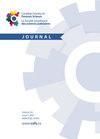The effect of non-alcoholic food and beverage consumption on preliminary breath alcohol testing by the Dräger Alcotest 6810 and Alco-Sensor FST
IF 0.5
Q4 MEDICINE, LEGAL
Canadian Society of Forensic Science Journal
Pub Date : 2017-05-25
DOI:10.1080/00085030.2017.1328160
引用次数: 5
Abstract
ABSTRACT This study investigated the frequency, magnitude, and duration of the mouth alcohol effect (MAE) following the ingestion of non-alcoholic food or beverages on two approved screening devices (ASD): the Dräger Alcotest 6810 and Alco-Sensor FST. Preliminary testing revealed only 5% of 39 non-alcohol containing food and beverage items tested produced a breath alcohol concentration (BrAC) ≥10 mg/100 mL on the Dräger Alcotest 6810 whereas there were no positive responses on the Alco-Sensor FST. Subsequent testing on 52 subjects consuming Dempster's® White Bread, Wonder™ 100% Whole Wheat Bread, 7-Up® and/or Rockstar® energy drink showed the MAE to be small in both alcohol-free and alcohol-positive subjects. The maximum BrAC produced in an alcohol-free subject was 22 mg/100 mL which dissipated within 90 seconds following ingestion. In alcohol-positive subjects, statistically significant increases in the BrAC were observed following ingestion of select breads and beverages; however, the increase was of sufficiently low magnitude that analytical and sampling variability could account for the differences observed. The MAE following ingestion of non-alcohol-containing food and beverages is rare, transient, and of low magnitude. There is negligible risk that motorists will be negatively impacted by this effect.Dräger Alcotest 6810和Alco Sensor FST对非酒精食品和饮料消费对初步呼气酒精测试的影响
摘要本研究调查了在两种经批准的筛查设备(ASD)上摄入非酒精性食品或饮料后,口腔酒精效应(MAE)的频率、程度和持续时间:Dräger Alcotest 6810和Alco Sensor FST。初步测试显示,在Dräger Alcotest 6810测试的39种不含酒精的食品和饮料中,只有5%的产品的呼气酒精浓度(BrAC)≥10 mg/100 mL,而Alco Sensor FST没有阳性反应。对52名食用Dempster®白面包的受试者进行的后续测试,Wonder™ 100%全麦面包、7-Up®和/或Rockstar®能量饮料显示,无酒精和酒精阳性受试者的MAE都很小。无酒精受试者产生的最大BrAC为22 mg/100 mL,在摄入后90秒内消散。在酒精阳性受试者中,在摄入选定的面包和饮料后,观察到BrAC在统计学上显著增加;然而,这种增长幅度足够小,分析和采样的可变性可以解释观察到的差异。摄入不含酒精的食物和饮料后的MAE是罕见的、短暂的,且程度较低。驾驶者受到这种影响的负面影响的风险可以忽略不计。
本文章由计算机程序翻译,如有差异,请以英文原文为准。
求助全文
约1分钟内获得全文
求助全文

 求助内容:
求助内容: 应助结果提醒方式:
应助结果提醒方式:


